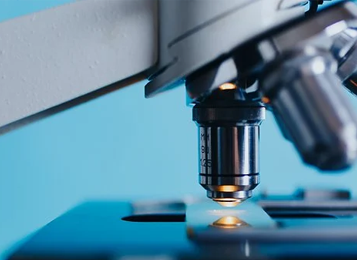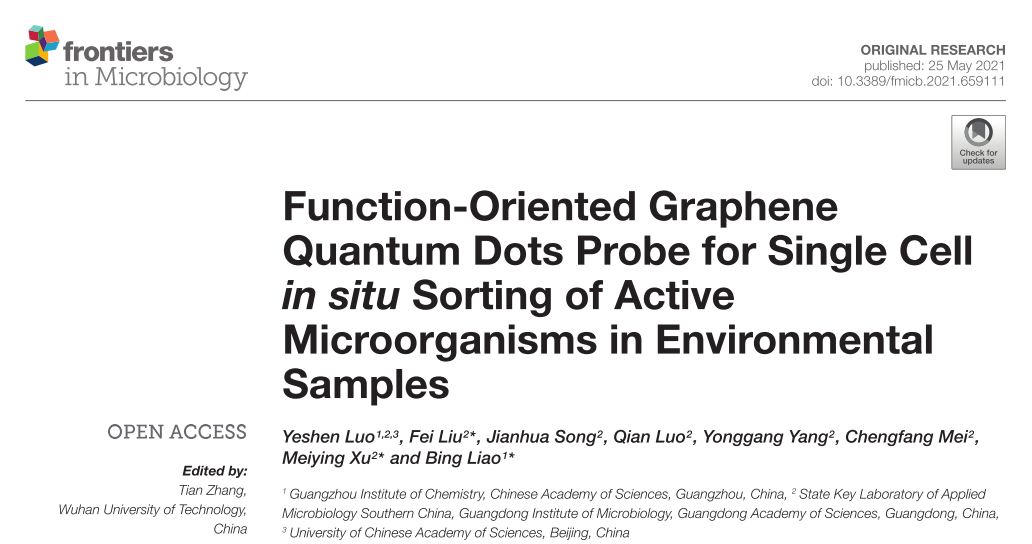

- Application Article
- Download
Hooke College

- About Us
- Team
- R & D and production
- Join Us
- Contact Us
- Qualification honor



There are a large number of functional and species unknown microorganisms in the environment, and the identification, isolation, and cultivation of specific functional microorganisms are necessary for building a biological resource library and environmental bioremediation. This article will share a paper titled "Function Oriented Graphene Quantum Dots Probe for Single Cell in Situ Sorting of Active Microorganisms in Environmental Samples" published by Professor Xu Meiying's team from the Institute of Microbiology, Guangdong Academy of Sciences, using the core product of HOOKE INSTRUMENTS PRECI SCS single cell sorter in Frontiers in Microbiology. The study prepared a graphene quantum dot probe (GQD-M) for fluorescence resonance energy transfer (FRET) using a bottom-up approach and confirmed its ability to recognize azo in environmental samples. The role of degrading functional bacteria.

Functional microorganisms play a vital role in removing environmental pollutants because of their diverse metabolic capability. Herein, a function-oriented fluorescence resonance energy transfer (FRET)-based graphene quantum dots (GQDs-M) probe was developed for the specific identification and accurate sorting of azo-degrading functional bacteria in the original location of environmental samples for large-scale culturing. First, nitrogen-doped GQDs (GQDs-N) were synthesized using a bottom-up strategy. Then, a GQDs-M probe was synthesized based on bonding FRET-based GQDs-N to an azo dye, methyl red, and the quenched fluorescence was recovered upon cleavage of the azo bond. Bioimaging confirmed the specific recognition capability of GQDs-M upon incubation with the target bacteria or environmental samples. It is suggested that the estimation of environmental functional microbial populations based on bioimaging will be a new method for rapid preliminary assessment of environmental pollution levels. In combination with a visual single-cell sorter, the target bacteria in the environmental samples could be intuitively screened at the single-cell level in 17 bacterial strains, including the positive control Shewanella decolorationis S12, and were isolated from environmental samples. All of these showed an azo degradation function, indicating the high accuracy of the single-cell sorting strategy using the GQDs-M. Furthermore, among the bacteria isolated, two strains of Bacillus pacificus and Bacillus wiedmannii showed double and triple degradation efficiency for methyl red compared to the positive control (strain S12). This strategy will have good application prospects for finding new species or high-activity species of specific functional bacteria.
The paper links:

+86-431-81077008

Building 3, Photoelectric Information Industrial Park, No.7691 Ziyou Road, Changchun, Jilin, P.R.C

marketing@hooke-instruments.com

COPYRIGHT©2022 HOOKE INSTRUMENTS LTD.ALL RIGHTS RESERVED 吉ICP备18001354号-1